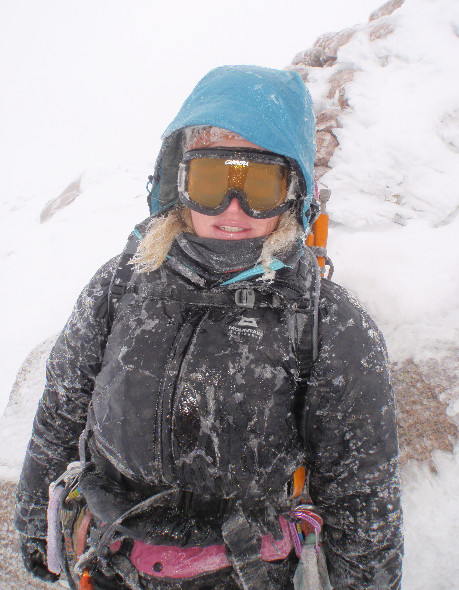Every winter people die of hypothermia in the Scottish mountains.
Scotland has a relatively mild climate but, because of the combination of wind and wet weather that frequently prevails in our high mountain areas, hypothermia is a significant hazard.
In cold wet conditions, the body can lose heat rapidly. Protective clothing traps air, which acts as insulation, but the insulation is severely reduced if the clothing becomes saturated.
Without protection from the wind, heat loss can become even faster.
As the body becomes colder, blood vessels constrict and blood flow to the extremities is reduced, resulting in loss of feeling in hands and feet.
Shivering produces heat and is remarkably effective, but it is costly in terms of energy input, so that an unfit, hungry or injured walker will become exhausted trying to maintain core warmth and will decline into unconsciousness and, ultimately, death.
Factors which will contribute to a risk of suffering from hypothermia include:

You may observe one or more of these symptoms: shivering, lethargy, apathy, a reduction in rational decision making, slipping and stumbling.
STOP, insulate, eat and drink. If improvements are noted, then head off the hill by the shortest route.
If improvements are not observed, then insulate the victim as best you can with the equipment you have and call for Mountain Rescue.
Hypothermia is widely known as a killer in the mountains, most associated with being a winter hazard. In an article reproduced from the February 2022 edition of Scottish nMountaineer magazine, Ken Crossley of Scottish Mountain Rescue describes what hypothermia is and how it should be treated - as well as how to avoid it in the first place.